// 测量到这里的时候,会给个标志位,稍后再处理。此时会计算总高度
// 除开这种情况的子控件不需要measure,其他的子控件都需要被measure一次,所以这样设置属性也可以提升性能
// Optimization: don’t bother measuring children who are only
// laid out using excess space. These views will get measured
// later if we have space to distribute.
//优化:不要麻烦测量那些只使用多余空间的孩子。如果我们有空间分布,这些视图将在稍后得到度量。
final int totalLength = mTotalLength;
mTotalLength = Math.max(totalLength, totalLength + lp.topMargin + lp.bottomMargin);
skippedMeasure = true;
} else {
if (useExcessSpace) {
// 满足这两个条件,意味着父类即LinearLayout是wrap_content,或者mode为UNSPECIFIED
// 那么此时将当前子控件的高度置为wrap_content
// 为何需要这么做,主要是因为当父类为wrap_content时,其大小实际上由子控件控制
// 我们都知道,自定义控件的时候,通常我们会指定测量模式为wrap_content时的默认大小
// 这里强制给定为wrap_content为的就是防止子控件高度为0.
// The heightMode is either UNSPECIFIED or AT_MOST, and
// this child is only laid out using excess space. Measure
// using WRAP_CONTENT so that we can find out the view’s
// optimal height. We’ll restore the original height of 0
// after measurement.
//heightMode 是 UNSPECIFIED or AT_MOST, childView 只使用剩余空间
//使用WRAP_CONTENT进行测量,以便找出视图的最佳高度。测量后恢复原来高度 0
lp.height = LayoutParams.WRAP_CONTENT;
}
// 如果当前的LinearLayout不是EXACTLY模式,且子View的weight大于0,优先会把当前LinearLayout的全部可用高度用于子View测量
// 我们在代码中也可以很清晰的看到,在getChildMeasureSpec()中,子控件需要把父控件的padding,自身的margin以及一个可调节的量三者一起测量出自身的大小。那么假如在测量某个子控件之前,weight一直都是0,那么该控件在测量时,需要考虑在本控件之前的总高度,来根据剩余控件分配自身大小。而如果有weight,那么就不考虑已经被占用的控件,因为有了weight,子控件的高度将会在后面重新赋值。
// Determine how big this child would like to be. If this or
// previous children have given a weight, then we allow it to
// use all available space (and we will shrink things later
// if needed).
//确定这个孩子想要多大。如果这个或前面的孩子给了一个权重,那么我们允许它使用所有可用的空间
//(如果需要,我们将在稍后缩小内容)。
final int usedHeight = totalWeight == 0 ? mTotalLength : 0;
measureChildBeforeLayout(child, i, widthMeasureSpec, 0,
heightMeasureSpec, usedHeight);
// 重置子控件高度,然后进行精确赋值
final int childHeight = child.getMeasuredHeight();
if (useExcessSpace) {
// Restore the original height and record how much space
// we’ve allocated to excess-only children so that we can
// match the behavior of EXACTLY measurement.
//恢复原来的高度,并记录我们分配给 excess-only children 的空间大小,以便我们能够准确地匹配测量的行为。
lp.height = 0;
consumedExcessSpace += childHeight;
}
final int totalLength = mTotalLength;
// getNextLocationOffset返回的永远是0,这里是加上子控件的margin值
mTotalLength = Math.max(totalLength, totalLength + childHeight + lp.topMargin +
lp.bottomMargin + getNextLocationOffset(child));
// 如果设置了measureWithLargestChild属性为true,获取最高子控件的高度
if (useLargestChild) {
largestChildHeight = Math.max(childHeight, largestChildHeight);
}
}
useLargestChild 可以通过 xml 属性 android:measureWithLargestChild 设置的,含义是所有带权重属性的View都会使用最大View的最小尺寸
//useLargestChild 属性指定
//所以接下来根据 largestChildHeight 重新计算高度
if (useLargestChild &&
(heightMode == MeasureSpec.AT_MOST || heightMode == MeasureSpec.UNSPECIFIED)) {
mTotalLength = 0;
for (int i = 0; i < count; ++i) {
final View child = getVirtualChildAt(i);
if (child == null) {
mTotalLength += measureNullChild(i);
continue;
}
if (child.getVisibility() == GONE) {
i += getChildrenSkipCount(child, i);
continue;
}
final LinearLayout.LayoutParams lp = (LinearLayout.LayoutParams)
child.getLayoutParams();
// Account for negative margins
final int totalLength = mTotalLength;
mTotalLength = Math.max(totalLength, totalLength + largestChildHeight +
lp.topMargin + lp.bottomMargin + getNextLocationOffset(child));
}
}
使用 largestChildHeight 重新计算mTotalLength,在代码中也可以看到,这个属性只在wrap_content情况下生效
到第二次测量中间还有一些其他的计算,就不一一去看了,直接看第二次测量
// Either expand children with weight to take up available space or
// shrink them if they extend beyond our current bounds. If we skipped
// measurement on any children, we need to measure them now.
// 重新计算有 weight 属性的 childView 大小,
// 如果还有可用的空间,则扩展 childView,计算其大小
// 如果 childView 超出了 LinearLayout 的边界,则收缩 childView
int remainingExcess = heightSize - mTotalLength
- (mAllowInconsistentMeasurement ? 0 : consumedExcessSpace);
if (skippedMeasure
|| ((sRemeasureWeightedChildren || remainingExcess != 0) && totalWeight > 0.0f)) {
// 根据 mWeightSum 计算得到 remainingWeightSum,mWeightSum 是通过
// android:weightSum` 属性设置的,totalWeight 是通过第一次 for 循环计算得到的
float remainingWeightSum = mWeightSum > 0.0f ? mWeightSum : totalWeight;
mTotalLength = 0;
for (int i = 0; i < count; ++i) {
final View child = getVirtualChildAt(i);
if (child == null || child.getVisibility() == View.GONE) {
continue;
}
final LayoutParams lp = (LayoutParams) child.getLayoutParams();
final float childWeight = lp.weight;
// 这是设置了 weight 的情况下,最重要的一行代码
// remainingExcess 剩余高度 * ( childView 的 weight / remainingWeightSum)
// share 便是此 childView 通过这个公式计算得到的高度,
// 并重新计算剩余高度 remainingExcess 和剩余权重总和 remainingWeightSum
if (childWeight > 0) {
final int share = (int) (childWeight * remainingExcess / remainingWeightSum);
remainingExcess -= share;
remainingWeightSum -= childWeight;
final int childHeight;
if (mUseLargestChild && heightMode != MeasureSpec.EXACTLY) {
childHeight = largestChildHeight;
} else if (lp.height == 0 && (!mAllowInconsistentMeasurement
|| heightMode == MeasureSpec.EXACTLY)) {
//如果是当前LinearLayout的模式是EXACTLY
//那么这个子View是没有被测量过的,就需要测量一次
//如果不是EXACTLY的,在第一次循环里就被测量一些了
// This child needs to be laid out from scratch using
// only its share of excess space.
childHeight = share;
} else {
//如果是非EXACTLY模式下的子View就再加上
//weight分配占比*剩余高度
// This child had some intrinsic height to which we
// need to add its share of excess space.
childHeight = child.getMeasuredHeight() + share;
}
final int childHeightMeasureSpec = MeasureSpec.makeMeasureSpec(
Math.max(0, childHeight), MeasureSpec.EXACTLY);
final int childWidthMeasureSpec = getChildMeasureSpec(widthMeasureSpec,
mPaddingLeft + mPaddingRight + lp.leftMargin + lp.rightMargin,
lp.width);
//重新测量一次,因为高度发生了变化
child.measure(childWidthMeasureSpec, childHeightMeasureSpec);
// Child may now not fit in vertical dimension.
childState = combineMeasuredStates(childState, child.getMeasuredState()
& (MEASURED_STATE_MASK>>MEASURED_HEIGHT_STATE_SHIFT));
}
final int margin = lp.leftMargin + lp.rightMargin;
final int measuredWidth = child.getMeasuredWidth() + margin;
maxWidth = Math.max(maxWidth, measuredWidth);
boolean matchWidthLocally = widthMode != MeasureSpec.EXACTLY &&
lp.width == LayoutParams.MATCH_PARENT;
alternativeMaxWidth = Math.max(alternativeMaxWidth,
matchWidthLocally ? margin : measuredWidth);
allFillParent = allFillParent && lp.width == LayoutParams.MATCH_PARENT;
final int totalLength = mTotalLength;
mTotalLength = Math.max(totalLength, totalLength + child.getMeasuredHeight() +
lp.topMargin + lp.bottomMargin + getNextLocationOffset(child));
}
// Add in our padding
mTotalLength += mPaddingTop + mPaddingBottom;
// TODO: Should we recompute the heightSpec based on the new total length?
} else {
alternativeMaxWidth = Math.max(alternativeMaxWidth,
weightedMaxWidth);
// We have no limit, so make all weighted views as tall as the largest child.
// Children will have already been measured once.
if (useLargestChild && heightMode != MeasureSpec.EXACTLY) {
for (int i = 0; i < count; i++) {
final View child = getVirtualChildAt(i);
if (child == null || child.getVisibility() == View.GONE) {
continue;
}
final LinearLayout.LayoutParams lp =
(LinearLayout.LayoutParams) child.getLayoutParams();
float childExtra = lp.weight;
if (childExtra > 0) {
child.measure(
MeasureSpec.makeMeasureSpec(child.getMeasuredWidth(),
MeasureSpec.EXACTLY),
MeasureSpec.makeMeasureSpec(largestChildHeight,
MeasureSpec.EXACTLY));
}
}
}
}
if (!allFillParent && widthMode != MeasureSpec.EXACTLY) {
maxWidth = alternativeMaxWidth;
}
maxWidth += mPaddingLeft + mPaddingRight;
// Check against our minimum width
maxWidth = Math.max(maxWidth, getSuggestedMinimumWidth());
setMeasuredDimension(resolveSizeAndState(maxWidth, widthMeasureSpec, childState),
heightSizeAndState);
if (matchWidth) {
forceUniformWidth(count, heightMeasureSpec);
}
}
举例
在weight计算方面,我们可以清晰的看到,weight为何是针对剩余空间进行分配的原理了。 我们打个比方,假如现在我们的LinearLayout的weightSum=10,总高度100,有两个子控件(他们的height=0dp),他们的weight分别为2:8。
那么在测量第一个子控件的时候,可用的剩余高度为100,第一个子控件的高度则是100*(2/10)=20,接下来可用的剩余高度为80
我们继续第二个控件的测量,此时它的高度实质上是80*(8/8)=80
到目前为止,看起来似乎都是正确的,但关于weight我们一直有一个疑问:**就是我们为子控件给定height=0dp和height=match_parent时我们就会发现我们的子控件的高度比是不同的,前者是2:8而后者是调转过来变成8:2 **
对于这个问题,我们不妨继续看看代码。
接下来我们会看到这么一个分支:
if ((lp.height != 0) || (heightMode != MeasureSpec.EXACTLY)) { } else {}
首先我们不管heightMode,也就是父类的测量模式,剩下一个判定条件就是lp.height,也就是子类的高度。
既然有针对这个进行判定,那就是意味着肯定在此之前对child进行过measure,事实上,在这里我们一早就对这个地方进行过描述,这个方法正是measureChildBeforeLayout()。
自我介绍一下,小编13年上海交大毕业,曾经在小公司待过,也去过华为、OPPO等大厂,18年进入阿里一直到现在。
深知大多数Android工程师,想要提升技能,往往是自己摸索成长或者是报班学习,但对于培训机构动则几千的学费,着实压力不小。自己不成体系的自学效果低效又漫长,而且极易碰到天花板技术停滞不前!
因此收集整理了一份《2024年Android移动开发全套学习资料》,初衷也很简单,就是希望能够帮助到想自学提升又不知道该从何学起的朋友,同时减轻大家的负担。
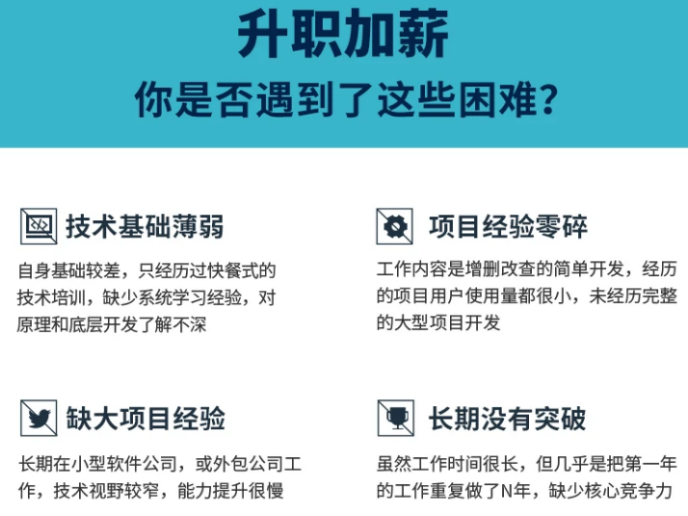
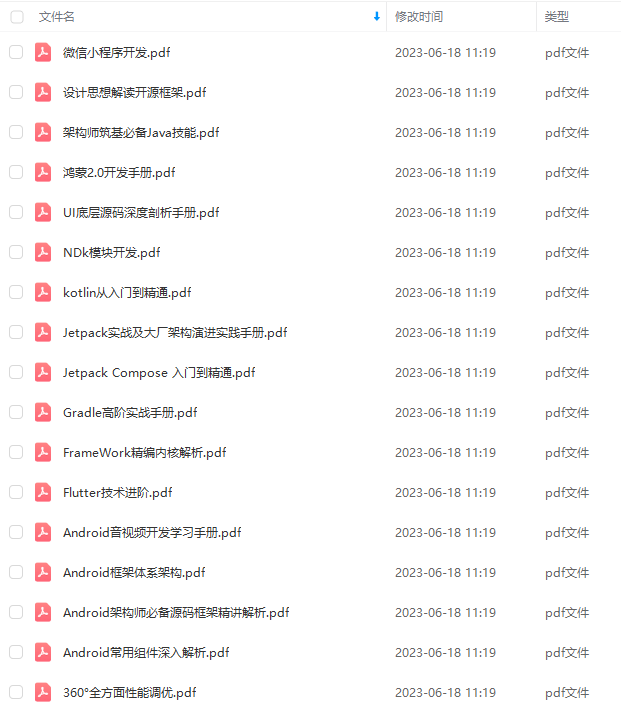
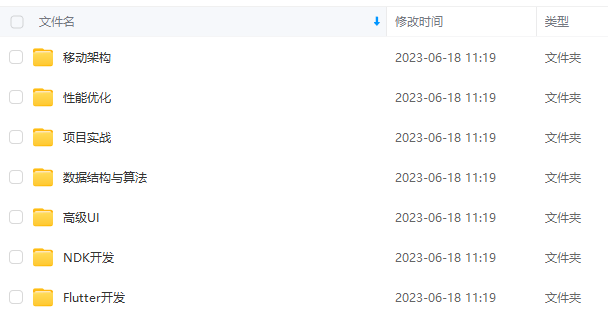
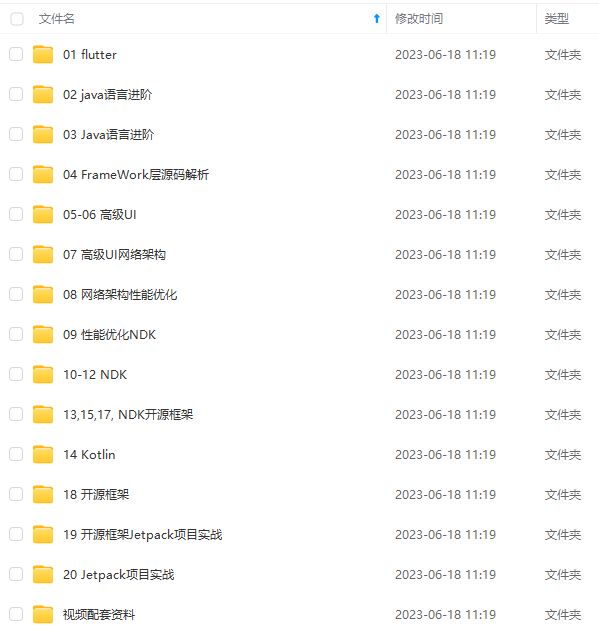
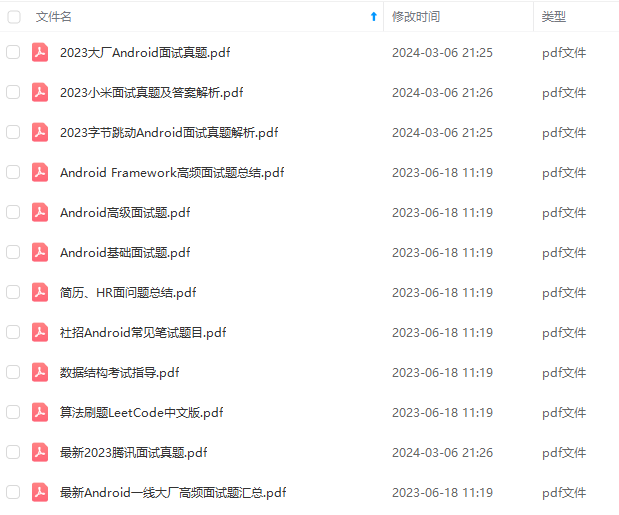
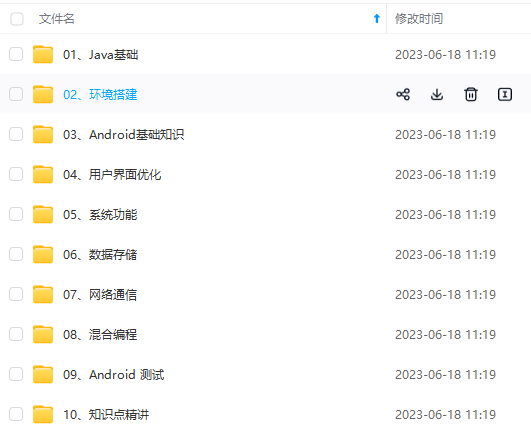
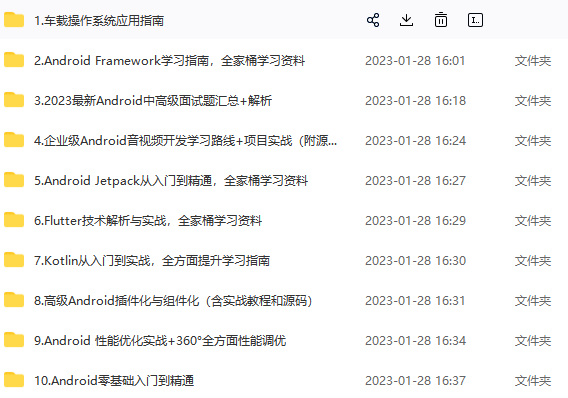
既有适合小白学习的零基础资料,也有适合3年以上经验的小伙伴深入学习提升的进阶课程,基本涵盖了95%以上Android开发知识点,真正体系化!
由于文件比较大,这里只是将部分目录大纲截图出来,每个节点里面都包含大厂面经、学习笔记、源码讲义、实战项目、讲解视频,并且后续会持续更新
如果你觉得这些内容对你有帮助,可以添加V获取:vip204888 (备注Android)

结尾
- 腾讯T4级别Android架构技术脑图;查漏补缺,体系化深入学习提升
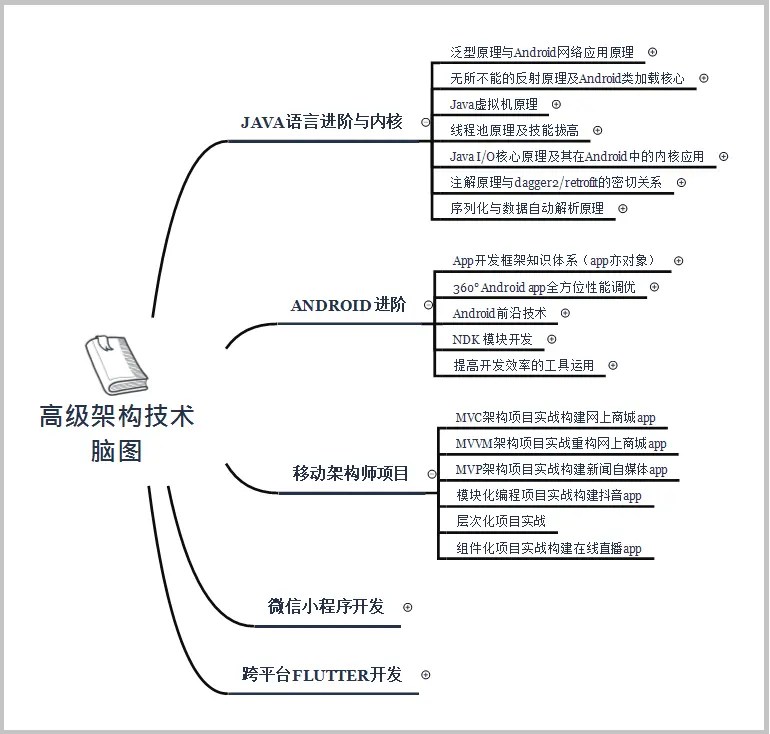
- 一线互联网Android面试题含详解(初级到高级专题)
这些题目是今年群友去腾讯、百度、小米、乐视、美团、58、猎豹、360、新浪、搜狐等一线互联网公司面试被问到的题目。并且大多数都整理了答案,熟悉这些知识点会大大增加通过前两轮技术面试的几率

有Android开发3-5年基础,希望突破瓶颈,成为架构师的小伙伴,可以关注我
图;查漏补缺,体系化深入学习提升
[外链图片转存中…(img-rihTNMb3-1711966357398)]
- 一线互联网Android面试题含详解(初级到高级专题)
这些题目是今年群友去腾讯、百度、小米、乐视、美团、58、猎豹、360、新浪、搜狐等一线互联网公司面试被问到的题目。并且大多数都整理了答案,熟悉这些知识点会大大增加通过前两轮技术面试的几率
[外链图片转存中…(img-BVtwAopR-1711966357398)]
有Android开发3-5年基础,希望突破瓶颈,成为架构师的小伙伴,可以关注我





















 637
637











 被折叠的 条评论
为什么被折叠?
被折叠的 条评论
为什么被折叠?








